Leaving Ziguinchor in the afternoon of this Saturday of early June was not a good idea. Before heading to my next country, I had to withdraw enough cash to survive through Guinea-Bissau and Guinea(-Conakry). I had read that the infrastructure is very poor and I am not sure to find a working ATM there.
However, finding a proper ATM in Ziguinchor during the week-end was not an easy task. I have found many closed ones and was misled too often by the locals. I finally discover the SGBS one, in service, which tried to trick me again with an “unable to perform transaction” message without mentioning the only problem was the empty paper roll for the receipt … Cash is the only king, hence cash is worth the trouble getting it.
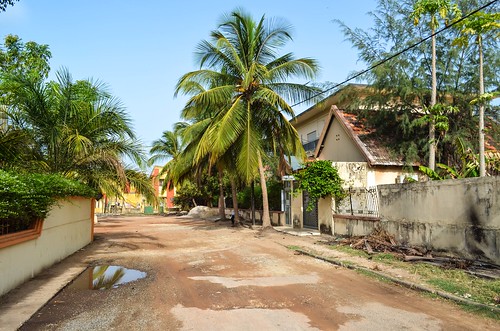
The streets in the center of Ziguinchor are all destroyed. It looks like the city has been abandoned, while Senegal in general doesn’t look too bad. Having lost enough time, I decided to abort my cycling day, to check-in again at the place I was staying at, and to visit the presumably only interest of Ziguinchor, the Alliance Franco-Senegalaise.
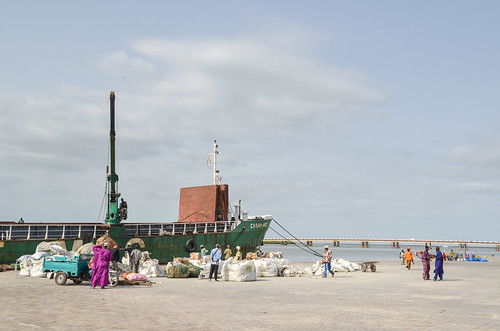
The building of the Alliance is a very interesting integration of a library, cafeteria, studying rooms and meeting rooms, in a maze of a colorful decoration. There is a speaker outside explaining philosophy, from Greek to German thinkers, to a massive and very attentive crowd. He speaks well, and manages to squeeze between Plato and Socrates the fact that contemporary philosophers are racist in ignoring the African philosophy. Which he denies explaining that the Greek philosophers didn’t know much before visiting Egypt, where they learnt so much and influenced in turn the whole European philosophy we know now. As a result, “the African man is [via Egypt] the father of the European philosophy“.
The rain poured down at night, making loud noise over the metallic roofs. But in the end, it is finally easier to sleep through that, rather than hearing the big parties organized in almost every compound.
The next morning, I am early on the road to cycle the last 20 kilometers of Casamance until the border with Guinea-Bissau. The area is apparently mined and as green as before. I reach quickly the border post in Mpack. I meet there a Chinese crew, coming from the south, telling me they have seen a photo of me before. I doubt it was me, as all cyclists have a heavy loaded bike, dirty clothes and a hairy face, but for sure they know Wang (Boren) the Chinese on a “world record cycling tour” I met in Mboro.
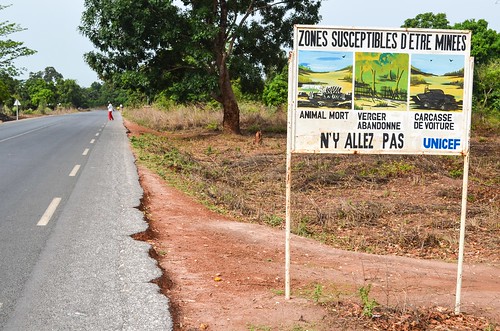

The Bissau border post is quiet. The officers who process my entry are not wearing a uniform, but a tee-shirt of a Dutch sponsor and one reading “Love kills slowly“. Almost instantly, the road looks very narrow and the vegetation seems to be taking over it. There is no more this small border of gravels along it for pedestrians, or anyone on two wheels, who cannot compete with the traffic for the asphalt.

I am no more a Toubab in this country, which has been a Portuguese colony until 1974. I am a “Branco”. Guinenses speak Kriolu, a Portuguese creole. Sometimes the kids by the road sing a song to my attention, repeating “branco pelele“, which means “white skin”. I am not a fan of all those names, the only funny greeting from kids I received so far was a couple of “Hello I’m fine!” (before I said anything) with a high pitch voice.
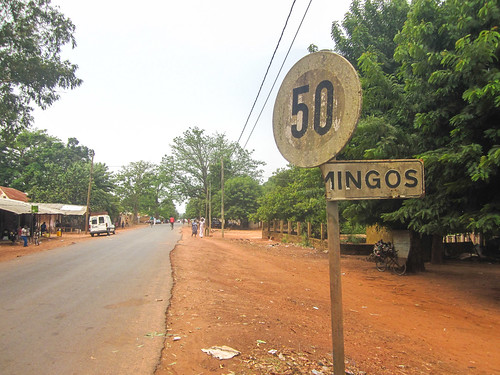
The first town is São Domingos. It’s also a good stop for eating a Portuguese breakfast. I am not surprised nor lost at the street food stall: bouye and bissap juices, niébé, fish, cebolla, bread, and petit pois. It’s a mix of many languages, but now I’ve been eating almost all my lunches on the roads, there is no mystery.
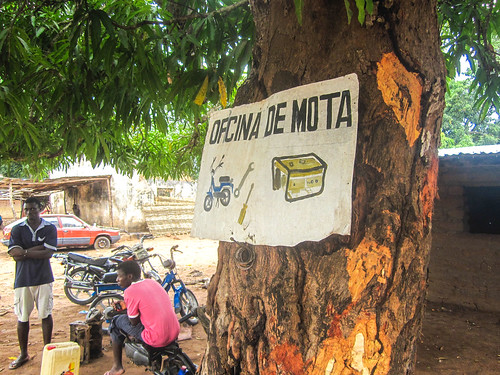
Some people look more Brazilian than African. I see also many churches, much more than ever since Spain, even if Islam is the most practiced religion in Guinea-Bissau. I spot an ATM in the small São Domingos, demonstrating that the Lonely Planet West Africa, which I downloaded for references (knowing it would bring more confusion than help) and that states there is not even an ATM in the capital Bissau, is completely outdated. Orange is present here too, alongside with MTN, as mobile phone operators.
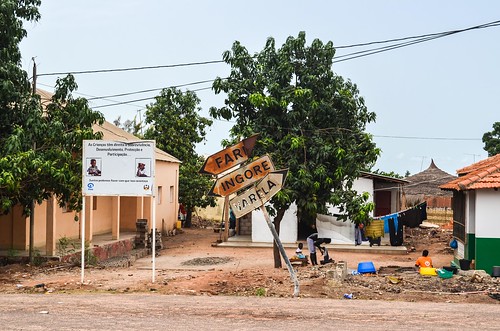
I follow the main road to Bissau. It is a beautiful path in the green lush. The housing in the villages, or as single houses by the road, is always very basic: a big rectangle covered by corrugated iron sheets. That is why at one point I am surprised to see a beautiful bridge crossing a river, where I expected an archaic ferry crossing. Bridges and tunnels are surprising for a country where the roads are barely asphalted. This one was completed in 2009 and financed by the EU. There is a stream of huge jellyfishes under it, and a toll gate that I am ordered to bypass.
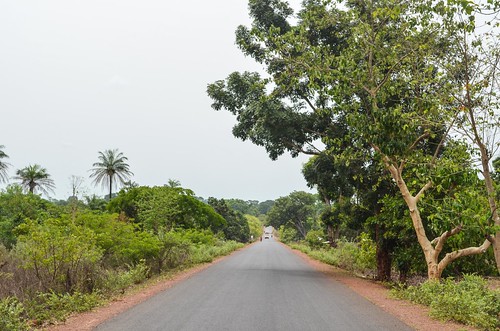
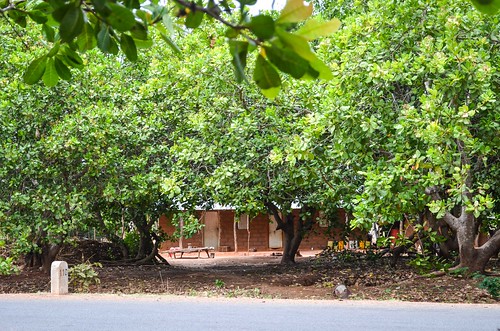
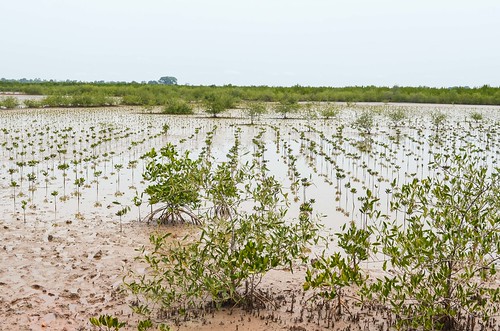
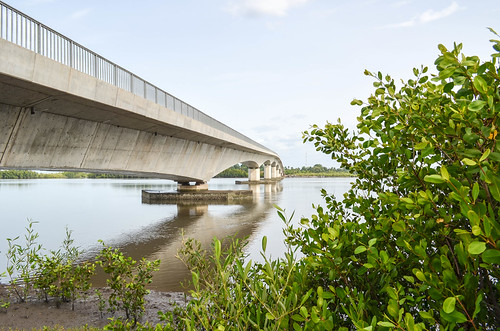

The temperatures are hot enough to make me drink almost a full 1.5L bottle in one go. If I take a break and leave my bicycle in the sun, the saddle feels like an iron when I get on it again. I can communicate in Kriolu with my Spanish and some tweaking, like replacing the “ll” and some “s” by “ch“. The cashew trees are omnipresent and the red fruits hang above my head most of the time. The land under the trees are occupied by giant ants, sometimes pigs, and fruit pickers.
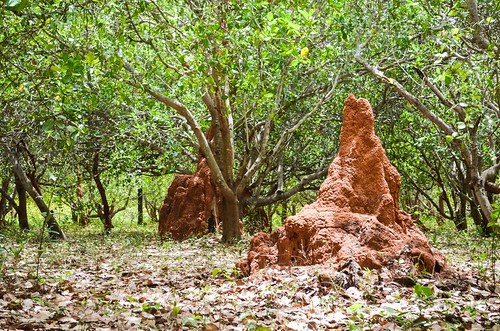
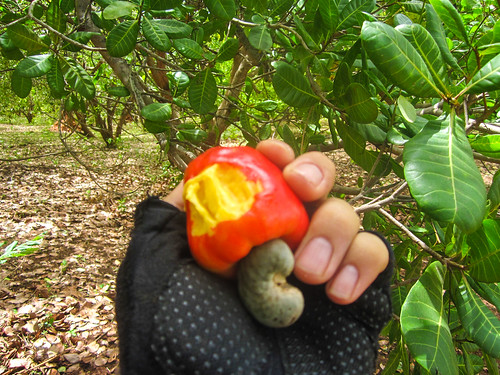

Just before I reach the town of Bula, ready to stop after 110 km of cycling, and about to look for a place to stay, the officers at the customs checkpoint don’t let me go further and offer me a room in their house. I accept and it is the right choice, as no more than 10 minutes after putting my bike under the roof, we watch together the thunderstorms and the strong rain sweeping the road.
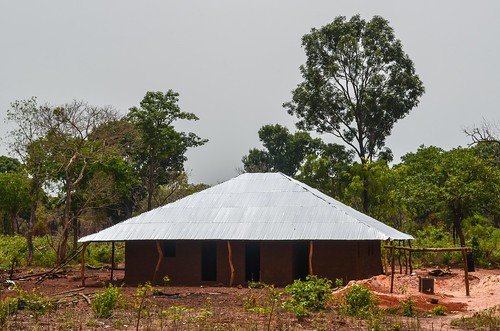
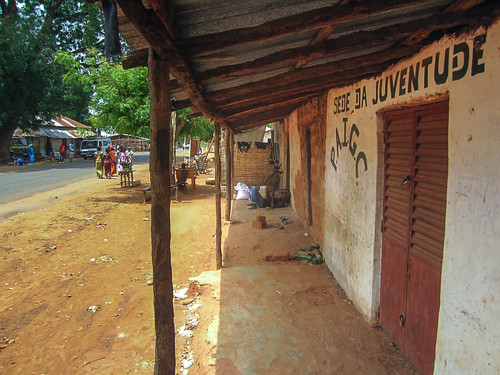
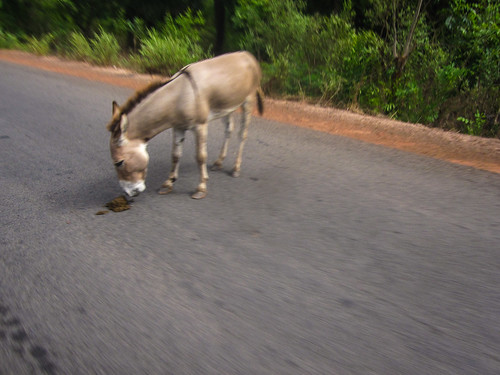
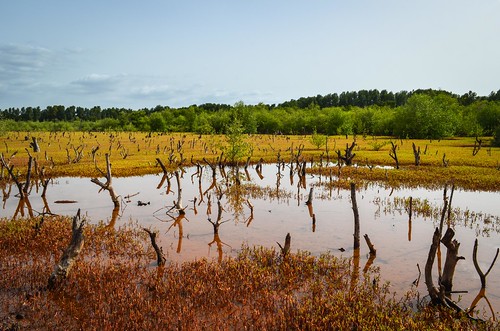
As expected, sleeping under a roof made of corrugated iron sheets is very hot, much hotter than outside. I am constantly sweating and wake up several times wet, to the sound of a giant grasshopper, a bullfrog or some other animal travelling between the separation panels of the house.

Luckily, the rain is not continuing onto the next day. Since I am close to the capital Bissau, my plan is to visit the city during the day, and to move out to sleep in the countryside. Bissau is in a dead-end after 20 km of road. If the ferry over Rio Geba was running, I could cross and continue on the southern part of the country, but it is not the case and I will stick to the north bank.
Shortly after crossing another brand new bridge, I stop at a water pump to refill my bottles. As usual, I am surrounded by a group of girls (they are always around the water pumps, one is pumping and the 19 others are chatting) until a man comes to me. He speaks French. Domingo grew up in Dakar.
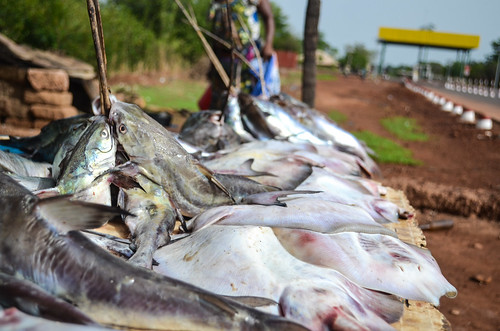
“There was a cyclist like you two weeks ago. We cycled together and he stayed for two nights at my place. You must come to my place too! Wait, I’ll take my bicycle …” he says.
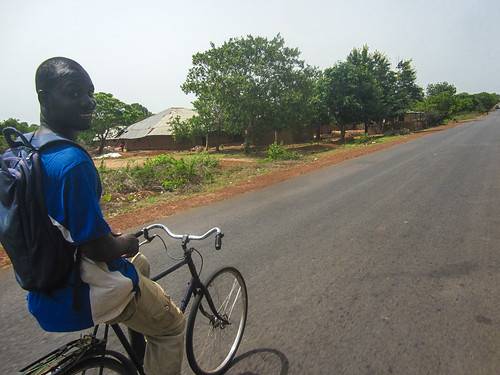
And that how I learnt that Johannes, met in the Liberian embassy of Dakar, took the same road and met Domingo the same way. Actually, even if Africa is huge, when a cyclist wants to travel around the continent on interesting roads, without much traffic, a bit off the beaten track, but without pushing on mud and sandy pistes for too long, there are not that many different options and the obvious route quickly shows up.
So that is providence making Domingo meet the two of us and we cycle back to Bissau. He shows me the big house a football player from FC Nantes (probably Ca) is building, while we avoid being hit by large trucks carrying cashew nuts. The entrance of Bissau city is a collection of cashew storehouses.

Guinea-Bissau is the 3rd largest cashew producer of Africa, after Nigeria and Ivory Coast, and the 8th in the world. The share of the nuts in the Guinean exports is more than significant with 93%.
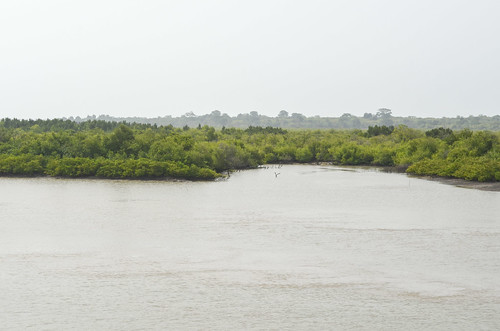
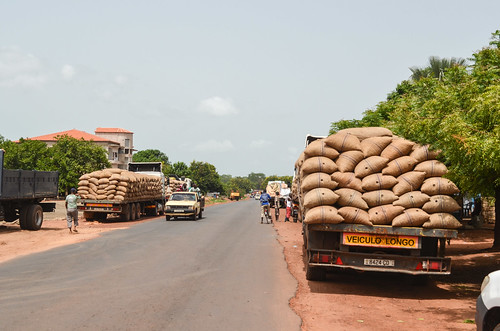
I break a 4th spoke as we stop by his room, unload the panniers and we leave for a city tour. The roads in Bissau are far from being nice, but the town is relatively small and we can get through the traffic easily. We are allowed to enter the commercial port with our bikes, even though it is only allowed during holidays. But the pictures are forbidden, so we will keep the experience of cycling between towers of Maersk containers for ourselves. Maybe some of those containers hide cocaine for millions or billions, as Bissau is being known for receiving the South American drugs before they head to Europe overland. There is no lack of articles highlighting the situation in Guinea-Bissau (cocaine used to mark out a football pitch) and more generally about narco-states in West Africa.

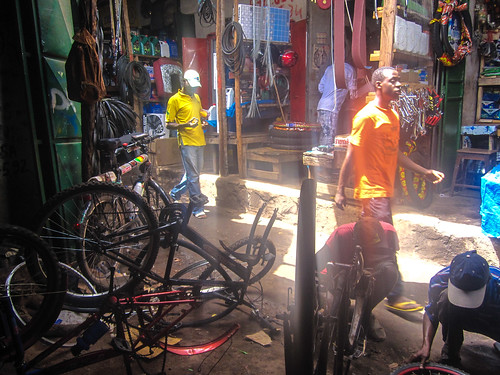

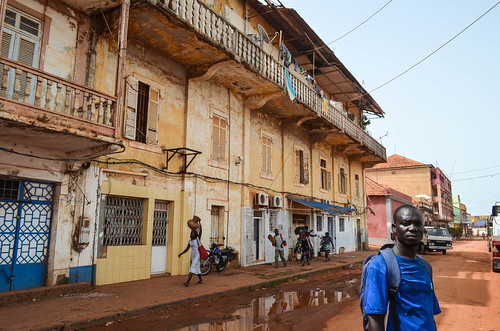
There are only 2 cargo ships stopped at the port and this reveals the economic level of Guinea-Bissau, one of the lowest GDP per capita in the world. Since its independence, the country has never witnessed political stability and sustained economic growth.
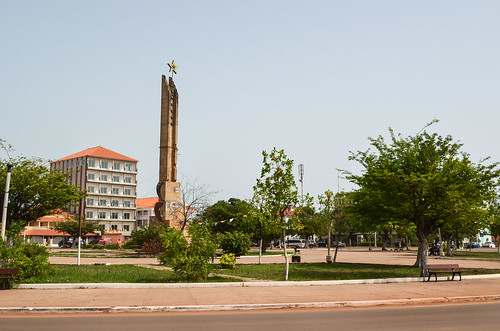
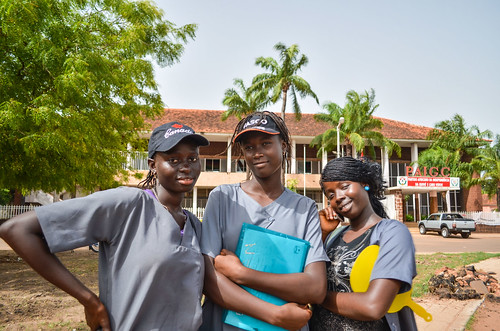
The PAIGC is the historical independence party. The letters stand for Partido Africano da Independência da Guiné e Cabo Verde, as Guinea-Bissau and Cabo Verde were fighting against the same Portuguese settlers. Nowadays both are independent countries, but the original name remains in Guinea-Bissau. Next to the PAIGC headquarters lays the presidential building, called a “sight” of the city for being in ruins and inhabited by bats. But what I see is a brand new one. He has actually been just renovated (by the Chinese).
It is impossible to find a postcard in town, and hard to find someone who knows what it is. They are apparently sold only at the closed post office and none of the many stationaries and book stores we visited had some. Impossible also to find stickers of the country flag for my bike.

I visit the Guinean embassy to try to make a correction on my visa. I received in Banjul a single entry visa, and might need a double entry if don’t want to cross directly from Liberia to Ivory Coast. The border posts are sometimes closed because of the bullets flying between the military and rebels. Wang the Chinese cyclist was caught in those and said he had to be escorted by the French and Chinese army. If this happens, I’d have to re-enter Guinea in the easternmost part of the country in order to continue.
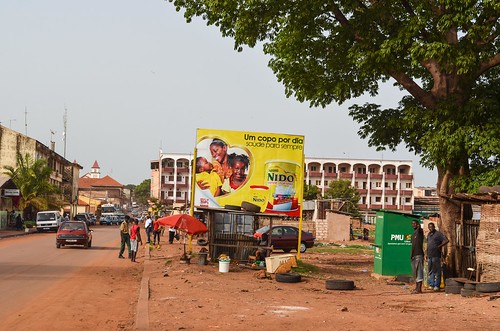
The consul highlights the point that any 2-months visa should come with at least 2 entries. It means the consul in Banjul has made a mistake, but there is no way to correct it outside Conakry. I will ask at the immigration office of Labe, a large Guinean city on my itinerary.
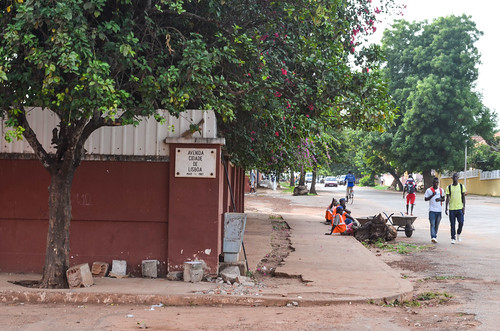
Finally, the only success of my day, i.e. the only item of my todo-list I can erase with confidence, is that I manage to get the APN settings for my SIM card at the MTN customer center; now I can get internet on my phone, but it’s much more expensive than what I have experienced so far. In total, we cycled 30 kilometers inside the capital only. It has a nice feel, but obviously lacks infrastructure for a capital: no supermarkets or nice shops, no new-looking building, only old or destroyed streets. I don’t know how the power gets in town (or if it does), but the whole neighborhood of Domingo does not have electricity. At night, don’t go out without your flashlight.
We cook rice and fish for dinner before starting a music video showcase on our phones. They introduce me to Prakatatumba from Angola, which songs are popular here, while I still have somehow Korikki and Hinoi Team’s Night of Fire on my phone …
Domingo is looking for contacts to resell the usual high quality goods from Europe needed in Africa, where they are worth 3 times their second-hand price in Europe. It includes good old cars (Mercedes 250 and vans), 4×4, laptops, boat motors for pirogues, etc. This is the same business as in Senegal and Mali, except that it is far from being saturated in Guinea-Bissau.
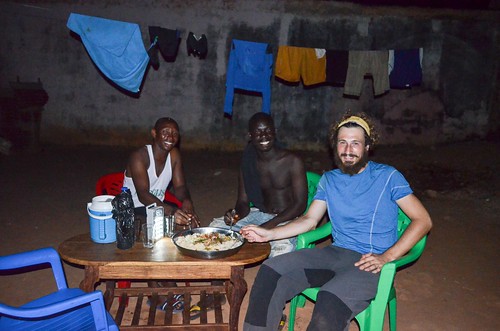






Chouette de te lire….avec cette fois des idées, odeurs, images et sons plus concrets de ce tu vis, des ambiances que tu rencontres et des paysages que tu traverses !
J’ai aussi un peu galéré pour trouver un ATM fonctionnel avec des sous à Zig, mais je n’ai pas atterri dans la même rue que toi ;P
Par contre, ai arpenté les mêmes rues aux trottoirs défoncés et aux maisons délabrées, le port et les rives du fleuve avec les pélicans, sous une chaleur humide écrasante, mais en passant entre les gouttes.
Bon courage pour la suite de la route à la saison des pluies !!!